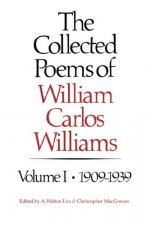|
This section contains 313 words (approx. 1 page at 400 words per page) |

|
This Is Just to Say Summary & Study Guide Description
This Is Just to Say Summary & Study Guide includes comprehensive information and analysis to help you understand the book. This study guide contains the following sections:
This detailed literature summary also contains Quotes and a Free Quiz on This Is Just to Say by William Carlos Williams.
The following version of this poem was used to create this guide: Williams, William Carlos. ''This Is Just to Say.'' The Collected Poems: Volume I, 1909-1939 (New Directions Publishing Corp., 1938).
Note that all parenthetical citations within the guide refer to the lines of the poem from which the quotations are taken.
“This Is Just To Say” is a 1934 poem by William Carlos Williams composed in three free verse stanzas. Williams was a key figure in both the modernist and imagist literary movements, and “This Is Just To Say” contains themes of both. A major late nineteenth- and early twentieth-century movement, modernism responded to and rejected the styles of past literary movements like romanticism and realism, which were viewed by modernists as stifling and inaccurate representations of human experience. To the modernists, old ways of writing felt out of touch with modern life and a world drastically altered by World War I. One of the most identifiable themes of modernist literature is its formal experimentation, a hallmark of the movement in which “This Is Just To Say” participates.
Imagism, Williams’s particular poetic movement, was an early sub-genre of modernism. Like the modernists, imagists challenged literary convention, focusing their works on extremely precise imagery as a means of expressing larger themes and ideas. “This Is Just To Say” is a classic portrait of imagist poetry, written in free verse (the imagists’ favored metrical style) and structured around the central image of the eaten icebox plums.
The poem is an admission of guilt centered on its speaker’s confession of having eaten plums they believe the poem’s addressee also intended to eat. Written in the first-person, the poem’s first stanza states the speaker’s actions, the second stanza adds the plums’ relation to the addressee, and the third stanza asks for forgiveness while describing the plums’ sensory qualities.
Read more from the Study Guide
|
This section contains 313 words (approx. 1 page at 400 words per page) |

|



